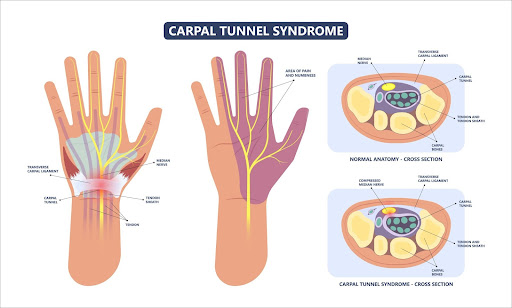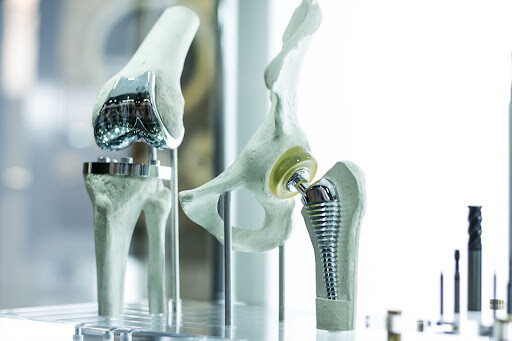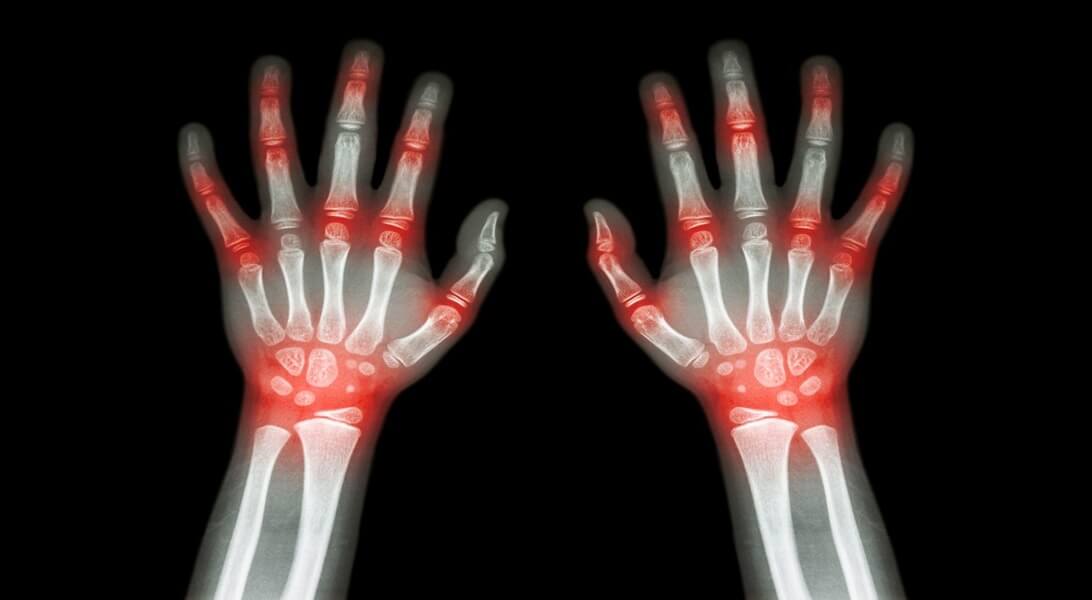Highlights
- To answer the question “what is rheumatoid arthritis?,” you must understand how autoimmune conditions work.
- When your immune system mistakenly attacks healthy tissues in your body, you’re dealing with an autoimmune condition.
- Rheumatoid arthritis is an inflammatory disease with autoimmune roots that attacks your joints and other tissues.
- Rheumatoid arthritis symptoms include joint pain, swelling, stiffness, fever, and weakness.
- Doctors have an extensive range of drugs at their disposal to treat rheumatoid arthritis.
- Use BidRx to find the best price for your arthritis medications.
Rheumatoid arthritis (RA) is a chronic inflammatory disease that results from an autoimmune condition. The immune system mistakes some healthy tissues for intruders and attacks them. RA targets the joints and other tissues like the lungs, eyes, heart, skin, and blood vessels.
What is Rheumatoid Arthritis, and How Does it Work?
The primary targets of rheumatoid arthritis are the joints. When we think about joint damage, we tend to think about the wear and tear of osteoarthritis, which is the most common form of the disease.
Rheumatoid arthritis attacks the membranes that line the joints and cause inflammation. Inflammation causes the membranes to thicken and fluid to build up around the joint. Eventually, the inflammation reaches the cartilage and damages it.
Joints that fall victim to rheumatoid arthritis often end up swollen and deformed. The painful joints are no longer able to fulfill their function. The rheumatoid arthritis patient may have difficulty maintaining balance or performing simple tasks.
The disease usually attacks fingers, hands, wrists, and knees. It will target several joints at the same time.
Rheumatoid Arthritis Symptoms
How do you know if you are starting to develop rheumatoid arthritis? The first symptoms of the disease may be a slight fever and fatigue, both signs that your body is trying to fight off inflammation. You may also feel a lack of appetite.
In addition to a general malaise, early rheumatoid arthritis may involve tenderness and weakness in parts of the body that used to be healthy.

Early rheumatoid arthritis seems to prefer smaller joints. It is likely to attack the joints that connect your fingers to your hands and toes to your feet first. Then, it spreads to the wrists, knees, and other joints and tissues.
The first signs of joint inflammation are tenderness, swelling, and warmth. RA tends to affect the same joints on both sides of the body. Stiffness in the morning that lasts for more than 30 minutes or following periods of physical inactivity is one of the common rheumatoid arthritis symptoms.
Once it overwhelms the body, it can affect other organs like the eyes and heart.
When Rheumatoid Arthritis Attacks Other Tissues
Because it’s a systemic disease, rheumatoid arthritis does not limit its action to the joints. It can also attack:
- The eyes. Rheumatoid arthritis symptoms in the eyes include dryness, vision problems, inflammation, and sensitivity to light.
- The skin. People with rheumatoid arthritis may develop small bumps under their skin.
- The lungs. Inflammation in the lungs can cause shortness of breath and lack of physical stamina.
- The mouth. You may experience dryness and gum inflammation.
- The heart. When RA inflammation reaches the heart muscle, it can cause damage.
- The blood vessels. Inflamed blood vessels can damage nerves, skin, and other organs.
- The blood. Rheumatoid arthritis can cause anemia, or decreased red blood cells. Anemic blood delivers less oxygen to the organs.
Rheumatoid arthritis symptoms can periodically flare in intensity. Then, they subside or go into remission, but remission does not mean that the patient is free of RA.
Due to the pain and discomfort it causes, rheumatoid arthritis may cause people to avoid physical exercise. As a result, many people gain weight, placing additional stress on their ailing joints.
Rheumatoid Arthritis Causes and Risk Factors
Rheumatoid arthritis is an autoimmune disease. Doctors don’t fully understand how it develops, although they suspect genetic predisposition may be among its triggers. Simply put: If your parents or grandparents RA, you are more likely to develop it as well.
Genetic predisposition alone doesn’t cause rheumatoid arthritis, but it affects how the body reacts to viruses and bacteria. RA may emerge from these reactions.
Other rheumatoid arthritis risk factors include:
- Age. Middle-aged people are the most likely to get rheumatoid arthritis, although the disease can occur at any age, including childhood. The earlier it strikes, the more severe the disease can be.
- Sex. Women are more at risk than men to develop rheumatoid arthritis.
- Obesity. Excess weight places extra stress on the joints. The increased wear and tear can make joints more vulnerable to RA.
- Smoking. In addition to facilitating the development of RA, smoking can make the disease more severe.

Rheumatoid Arthritis Diagnosis
Disease-modifying anti-rheumatic drugs (DMARDs) can treat the disease and offer relief to RA sufferers. Doctors aren’t always sure when to prescribe DMARD treatment, however, because it’s difficult to diagnose early rheumatoid arthritis.
The following techniques can help doctors establish early RA diagnosis:
- Genetic markers. Specific genes or DNA sequences can tell doctors whether a patient is likely to suffer from accelerated joint degradation.
- Blood tests. Elevated levels of rheumatoid factor in the blood can tell doctors that a patient may have arthritis. Bloodwork can also provide other clues, like the presence of specific antibodies or high levels of certain proteins.
- X-rays. X-rays provide a snapshot of the condition of the joints, allowing doctors to determine the severity and progression of the disease.
Rheumatoid Arthritis Complications
Rheumatoid arthritis can cause many complications beyond the common symptoms. Many medications doctors use to manage the condition can cause complications and side effects as well.
- Osteoporosis. Rheumatoid arthritis can cause osteoporosis. Some of the drugs that treat the condition can further increase the risk of osteoporosis.
- Altered body composition. RA increases the fat deposits of the body and decreases lean muscle mass.
- Carpal tunnel syndrome. Persistent inflammation in the wrists can affect the nerves that lead to the fingers.
- Lymphoma. Due to its effects on the blood and blood vessels, RA increases the risk of blood cancer.
- Infections. RA hamstrings the immune system. Some RA drugs also suppress the immune system, raising the chance of infections.

Rheumatoid Arthritis Treatment
Medications for Rheumatoid Arthritis
Depending on the severity of your rheumatoid arthritis, your doctor will prescribe one or more drugs from the following classes:
- NSAIDs. Non-steroidal anti-inflammatory drugs like ketoprofen, ibuprofen, or naproxen sodium can alleviate your symptoms and help you manage your condition. They may irritate your stomach and guts.
- Corticosteroids. Drugs like prednisone can suppress your immune system and help you with your rheumatoid arthritis symptoms. They may cause weight gain, osteoporosis, and diabetes as side effects.
- Conventional DMARDs. Disease-modifying anti-rheumatic drugs can save your joints from further damage. Methotrexate and hydroxychloroquine can cause liver damage and make you vulnerable to infections.
- Biologic response modifiers. Drugs like adalimumab, anakinra, and rituximab work well against rheumatoid arthritis combined with conventional DMARDs.
- Synthetic DMARDs. This new class of drugs may work where nothing else does. The side effects of medications like tofacitinib and baricitinib include blood clots and cancer.
For more information about medications used to treat rheumatoid arthritis, please see our Reference Guide to Rheumatoid Arthritis Medications.
Physical/Occupational Therapy for Rheumatoid Arthritis
There is no cure for rheumatoid arthritis. However, you can manage the condition to improve your quality of life.
Physical therapy (PT) and occupational therapy (OT) can help you manage the stress on arthritic joints. Physical therapy covers physical interventions like exercises, while OT can teach you new ways to accomplish your activities of daily living.
With PT or OT, you can learn new ways to handle activities like:
- Working
- Exercising
- Everyday activities like cooking, getting dressed, bathing, etc.
- Leisure activities
Physical and occupational therapy can help you:
- Manage your rheumatoid arthritis to reduce or eliminate your dependence on drugs
- Increase your joint mobility following flare-ups
- Manage pain and reduced mobility in conjunction with RA medication
Rheumatoid arthritis therapy can achieve its goals through several means:
- Exercise. Low-impact exercises like swimming and walking can be effective in alleviating rheumatoid arthritis symptoms.
- Activity modifications. Joint damage may prevent RA patients from performing simple activities, like opening a jar. Therapists can teach you new ways to solve everyday physical challenges.
- Workplace modifications. You can learn about adaptive equipment and more ergonomic positions for work. You will also learn stress-management techniques.
- Assistive devices. Therapists know many tools and devices like supportive equipment, carts, and storage devices that can improve your life.
- Lifestyle management. Rheumatoid arthritis therapists can suggest lifestyle changes, including sleep hygiene advice and how to make predictive changes to your schedules.
Rheumatoid Arthritis Surgery
Sometimes, RA medication may fail to restore joint function or alleviate pain. Doctors may perform surgery on patients who don’t respond to medication. Through this intrusive treatment method, they can restore function, reduce pain, and repair damage.
- Synovectomy. Rheumatoid arthritis often starts with the inflammation of the membrane that surrounds joints. By removing this membrane, doctors may eliminate the source of inflammation and improve joint function.
- Joint replacement. Through this surgical approach, doctors replace the damaged parts of the joint with plastic and metal prosthetics. The procedure often leads to radical improvement in patients’ quality of life.
- Joint fusion. When joint replacement is not an option, doctors may choose to surgically fuse the joint. Although fused joints lose mobility, the procedure can stabilize a deformed joint and relieve pain.
- Tendon repair. Damaged joints often injure the tendons that surround them, creating additional sources of pain. By repairing these tendons, doctors can reduce pain and improve joint function.

Find the Lowest Price for Arthritis Medication
BidRx allows you to create bids for your arthritis medications and let pharmacies compete for your business. Simply create a bid, and you will receive offers from several pharmacies. Choose the best offer and have your medications delivered to your door or pick them up locally.
Find your arthritis medication and create a bid today!
